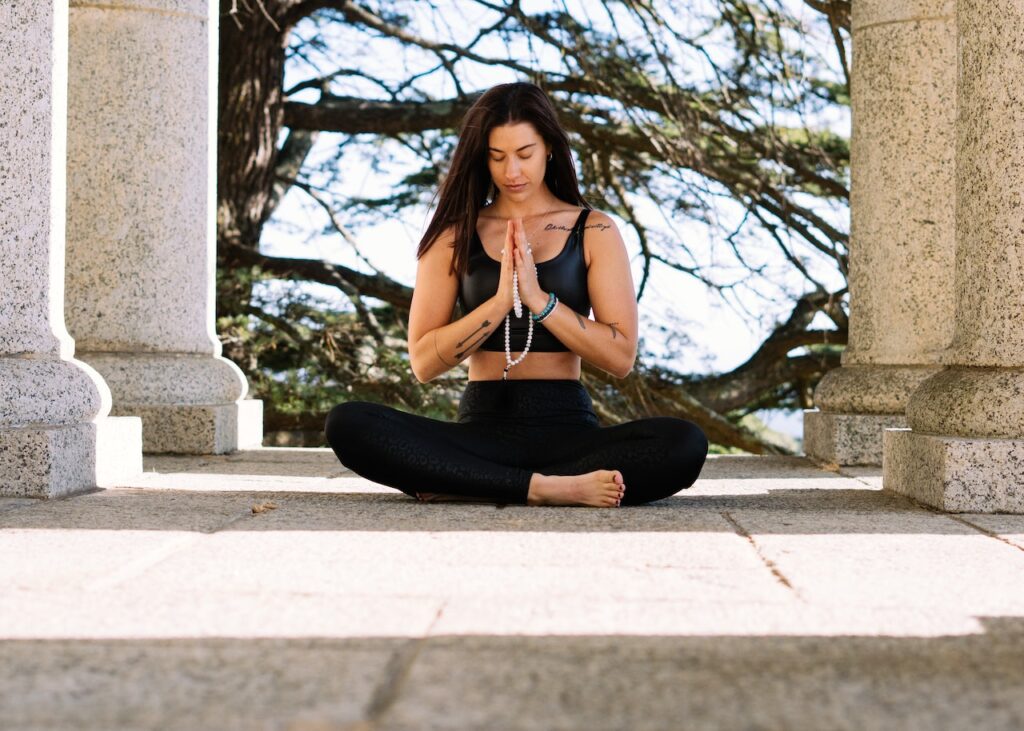Mindfulness has become an increasingly popular concept in recent years. Being mindful essentially means being fully present and aware in the current moment, without judgment. Practicing mindfulness has been shown to reduce stress, improve focus, boost happiness, and provide many other benefits. Making mindfulness a part of your daily routine can be life-changing.
In this article, we’ll explore 12 simple yet highly effective tips for practicing mindfulness every day. From meditation to mindful eating to finding mindfulness reminders, incorporating these practices into your life can help you become more centered, peaceful, and appreciative of each moment.
Learn 12 Simple Daily Mindfulness Habits to become more mindful every day through meditation, gratitude, and living in the present moment.
1. Try a Simple Breathing Meditation
One of the best ways to start bringing mindfulness into your day is through a basic breathing meditation. Here are some recommendations for keeping it simple:
- Set aside just 5-10 minutes to begin with. You can work up to longer sessions.
- Find a comfortable seated position. Close your eyes softly or keep them lowered.
- Take a few deep breaths to settle in. Breathe through your nose if possible.
- Pay attention to the natural flow of your breath. Don’t try to control it. Just observe each inhale and exhale.
- When your mind wanders, gently bring your attention back to your breath.
- Repeat this process for the duration of your meditation. Focus on the sensations of each breath.
Even this short, uncomplicated practice can induce calm and help you tune into the present. Try doing it first thing in the morning or during lunch for an midday reset.
2. Go for a Mindful Walk
Walking meditations are another simple route to mindfulness. Here’s how to put mindfulness into your next walk:
- Go somewhere peaceful with few distractions. A park, hiking trail or even around your neighborhood all work.
- As you begin strolling at an unhurried pace, shift your awareness to the physical sensations in your feet and legs. Notice each footfall.
- Now expand your attention to take in the whole experience of walking. Feel the breeze, sounds, and sights, without analyzing them. Stay focused on the present.
- When your mind wanders, gently return your focus to the sensations of walking. Appreciate the wonder of motion.
Aim for at least 10 minutes to sink into this mindful movement. Going for mindful walks a few times per week will boost your overall mindfulness.
3. Eat Mindfully
Mealtimes provide ample opportunities to practice mindfulness. Applying a mindful eating approach allows you to slow down, savor each bite, and tune into your food’s textures and flavors more fully. Follow these tips:
- Pause for a moment before eating to appreciate your food and feel gratitude for it.
- Silence any distractions and put down utensils between bites. Chew thoroughly.
- Notice the sensory details – aromas, textures, sounds, appearance, and flavors.
- When your mind wanders, gently return focus to the act of eating.
- Refrain from judgment about food being “good” or “bad.” Just experience it.
Eating mindfully not only boosts your overall mindfulness skills, but can also improve your relationship with food.
4. Find Daily Reminders to Be Mindful
Establishing little mindfulness rituals throughout your regular routine makes practicing it simpler. Try these ideas:
- Each time you stop at a red light or wait in line, take an attentive breath.
- When washing dishes, pay full attention to the warmth of the water and motions of scrubbing.
- Before checking your phone, pause to take a few conscious breaths.
- While brushing your teeth, really engage each of your senses.
- When petting an animal, fully tune into the feeling and moment.
- Waiting for your computer to boot up? Follow your breath until it loads.
Post little sticky note reminders to trigger mindfulness in key places like your bathroom mirror or car dashboard.
5. Take Up Mindful Journaling
Journaling can be an excellent mindfulness practice. It allows you to slow down and become more aware of your thoughts, emotions, and experiences.
To make your journaling more mindful, try the following:
- Date each entry, and take a breath before writing to clear your mind.
- Focus your writing on being rooted in the present moment.
- Avoid excessive judgment, analysis or problem-solving when journaling. Just express what arises.
- Pay attention to sensory details you’re experiencing like sounds, scents or textures.
- If strong emotions arise, take time to gently explore them through writing.
- Reflect back on previous entries to see how your perspective changes.
Journal mindfully at least a few times per week. Writing things down increases self-awareness and relieves stress.
6. Practice Mindful Observation
Taking time to mindfully observe your surroundings can profoundly shift your perspective. Here are some tips:
- For a few minutes, silently gaze at a tree, flower or other natural object. Notice every detail.
- Observe other people going about their day, without judgment about who they are. Wish them well.
- While stopped in traffic, watch the sky. Follow passing clouds and birds with your eyes.
- Pick up an ordinary object like a pencil. Examine it as if you’ve never seen it before.
- At night, sit looking at the stars. Feel your place in the vast universe.
The goal is to watch without analysis or interpretation. This sharpens concentration and promotes gratitude.
7. Listen to a Guided Mindfulness Meditation
As you deepen your mindfulness practice, guided meditations can provide helpful structure. Benefits include:
- A teacher’s voice guides your attention and reminds you to return to the present.
- You learn new mindfulness skills and perspective.
- You can play meditations on demand when needing an anchor.
- Guided sessions are available in any length to suit your schedule.
- A vast range of topics exist like mindful movement, heartfulness, or sleep.
- Many options are free through apps like InsightTimer. YouTube also has a wealth of guided meditations.
Even 5-15 minute sessions can provide the benefits of both meditation and instruction.
8. Practice Mindful Self-Care

Any activity can become more mindful by infusing care and attention – including acts of self-care. For instance:
- When taking a shower or bath, fully engage your senses. Feel the warm water, listen to it run, and enjoy aromas.
- While applying lotion or skincare, pay close attention to massaging each motion. Don’t zone out.
- Sip your morning coffee or tea with intention, avoiding multitasking. Appreciate the flavor and scent.
- While getting ready for your day, do each task consciously like brushing your hair or applying makeup.
- Treat exercise as a mindful walking or yoga meditation by tuning into each movement and breath.
Make your routine more mindful by considering how self-care enhances wellbeing in both body and mind.
9. Do a Daily Loving-Kindness Meditation
Also called metta meditation, this focuses on cultivating kindness and compassion – both for yourself and others. Research shows it boosts positive emotions.
Here are some guidelines for a simple loving-kindness meditation:

- During your meditation session, envision yourself happy, healthy and at peace. Send yourself kind wishes.
- Next, picture loved ones and wish them well. Visualize them smiling.
- Then bring to mind neutral people like neighbors or acquaintances. Extend warm feelings their way.
- Finally, send compassion to difficult people in your life. Wish them freedom from suffering.
- Conclude by radiating kindness to all beings everywhere.
Even a short loving-kindness meditation infuses your day with empathy. It also helps conflict resolution and relationships.
10. Find Daily Moments of Awe and Beauty
Cultivating awe is a powerful mindfulness practice. Seeking beauty and inspiration in your surroundings nurtures appreciation and perspective.
Here are some simple ways to invite in daily awe:
- Make a point to notice and give thanks for small beauties around you like trees blossoming, morning dew or a vibrant sunset.
- Gaze up at the stars and ponder your place in the universe.
- Take time to recognize the achievements, talents and good qualities of others.
- Visit or look at images of natural wonders and manmade marvels. Feel awestruck.
- Listen to music or look at art that moves you. Allow yourself to feel inspired.
Moments of awe remind you of what truly matters and put your own worries in perspective. Let them fill you with reverence for life.
11. Practice Mindful Movement

Any form of mindful movement combines the mindfulness of meditation with the awareness of physical sensations. Great options include:
Yoga – Link breath and movement while holding postures. Mentally scan your body.
Walking meditation – Focus your senses on the environment and each step.
Qigong – Flow through tranquil, gentle movement patterns with concentration.
Tai chi – Find stillness within fluid, meditative motions. Be present.
Dancing – Feel each sensation as you sway to music. Forget technique and just inhabit your body.
Choose mindful activities you enjoy and set aside regular time for them. Moving meditatively reduces stress and improves body awareness.
12. Unplug and Immerse in Nature

Spending reflective time in nature is profoundly centering. Disconnecting from devices allows you to be fully present and attentive outdoors.
Some great nature activities for unplugged mindfulness include:
- Hiking while tuning into sights, sounds and sensations on the trail
- Sitting on the earth and feeling your interconnectedness
- Exploring woods, parks or new natural areas with beginner’s mind
- Looking up at the night sky for perspective and awe
- Gardening while staying attentive to each motion and plant
Aim to unplug in nature at least a few times per week. Let its beauty inspire mindfulness, gratitude and wonder.
Key Takeaways for Developing a Daily Mindfulness Practice
- Start small with just 5-10 minutes per day. Work up to longer sessions.
- Try basic breathing meditations, mindful walking and eating to get started.
- Install reminders like sticky notes to trigger mindfulness throughout your routine.
- Schedule time for simple mindfulness activities like journaling, loving-kindness meditation, and being in nature.
- Look for opportunities for mindful observation, movement, and awe in your daily life.
- Use resources like books, apps, and YouTube for guidance.
- Approach mindfulness with patience, non-judgment and compassion – for yourself and others.
- Stay focused on living fully in the present moment without analysis.
- Over time, daily mindfulness becomes effortless. Its benefits compound.
- Small moments of mindfulness add up to improved concentration, calm, gratitude, and focus on what matters most.
Frequently Asked Questions About Daily Mindfulness Practices
What is the best time of day for mindfulness?
Many people find first thing in the morning and at night most beneficial. But any time that you can devote full attention works! Mini mindfulness moments throughout the whole day are also highly effective.
How long per day should I devote to mindfulness?
Just 5-15 minutes daily to start yields excellent results. You can steadily increase time from there up to 30-60 minutes per day for an intensive practice. But remember quality over quantity, even 2 focused minutes are great.
How do I stick to a routine of daily mindfulness?
Same as starting any new habit, start small and attach it to an existing routine like your morning coffee or pre-bed wind down. Use reminders like phone alarms. Treat mindfulness time with as much importance as other obligations.
What should I do when my mind wanders during mindfulness?
Don’t get frustrated. Returning your attention again and again to the present is part of the practice. With time and consistency, a wandering mind settles into focused awareness.
Do I need to sit cross-legged on the floor when meditating?
Not at all – the posture that allows you to be alert yet relaxed is best. This differs for everyone. Sitting in a chair, lying down, even walking are all fine for mindfulness.
What if I fall asleep meditating?
No worries, rest is good! This means you entered a deeply relaxed state. With practice you’ll remain alert yet tranquil. So feel free to stand or do walking meditation if you get sleepy.
Are mindfulness apps and videos helpful?
Yes, they provide guided structure which helps many beginners. Apps like Calm, Headspace and InsightTimer are full of excellent meditations and resources. YouTube also has countless guided mindfulness practices.
How soon will I experience benefits from daily mindfulness?
Many notice positive effects like lower stress and increased focus within just days or weeks. But the real magic happens with sustained practice after 2-3 months. Be patient with yourself on the journey.
More Articles
- Living Life to the Fullest: 10 Tips for Finding Fulfillment and Happiness
- 31 of the Best Pieces of Advice to Live By
- Top 10 Tips for Getting Healthy in 2023
- Inspirational Quotes for Daily Motivation
- 10 Proven Ways to Improve Your Focus and Concentration
- The Most Effective Morning Routine to Increase Your Productivity
- How to Make 2023 the Best Year of Your Life
In Summary
Adopting a regular mindfulness practice truly has the power to enhance your physical, mental and emotional wellbeing. Start small. Be consistent. Seek out resources and community support. Begin weaving more mindful moments into your normal routine. Before long, you’ll be more joyful, peaceful, inspired and resilient. By learning to inhabit each moment, your whole life opens up.
Images from – Pexels

